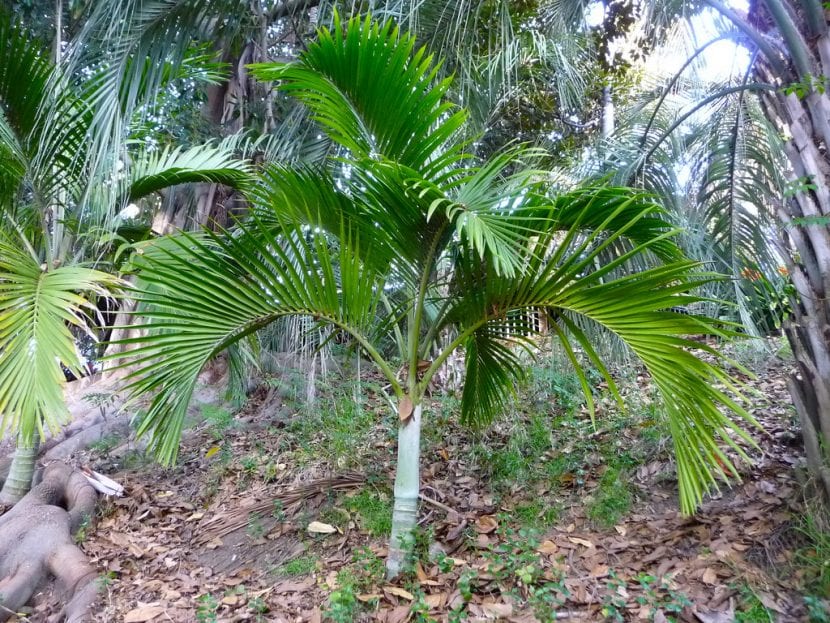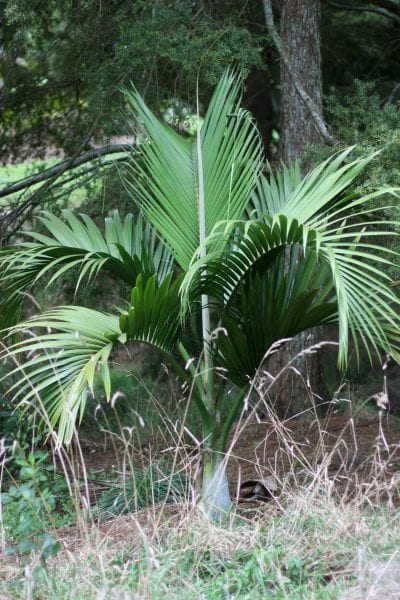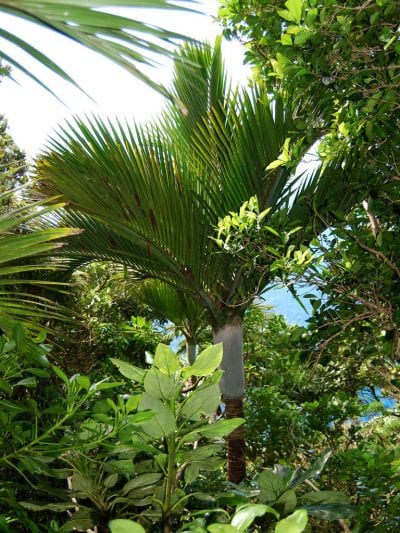
Image - Flickr
All the palms They are plants with very peculiar characteristics: the vast majority have a slender trunk that grows to heights of 10, 20 and even more meters, crowned by leaves that can be pinnate or fan-shaped, which seem to want to touch the sky. . But there are some that stay smaller, living under the shade of large trees or other taller palms, as is the case of the Hedyscepe canterburyana.
It is not well known yet, but we hope that it will soon be because it is, as we are going to see, one of the species that can best adapt to living in temperate climates. And besides, its beauty can probably be compared to that of the coconut tree (Cocos nucifera), but its rusticity is much higher 😉.
What is Hedyscepe canterburyana like?

Our protagonist is a palm tree that lives in the mountain forests and on the cliffs of Australia, at an altitude of 400-750 meters. It is the only one of its kind, and it is characterized by having a thin trunk with pinnate and arched dark green leaves. It can reach a height of 10 meters Over the years, but despite this, it is a fantastic plant to have in a pot for a long time, since its growth rate is quite slow (about 20cm / year).
The fruit is egg-shaped and red when ripe. It measures about 4 centimeters and inside there is a single seed.
What are their cares?

Did you like this palm tree? If so, and you want to have it in your garden, we recommend providing these cares:
- Location: semi-shadow. It can be kept indoors, in a very bright room, for more than ten years.
- Soil or substrate: it is not very demanding, but it will grow best in those that have good drainage and are rich in organic matter.
- Irrigation: about three times a week in summer, and 1-2 / week the rest of the year.
- Subscriber: in spring and summer it must be paid with a fertilizer for palm trees, following the instructions specified on the package.
- Planting or transplanting time: in spring.
- Multiplication: by seeds in spring. Very slow germination, it can take several months to germinate at a temperature of 20ºC.
- Rusticity: similar to the one with the Kentia (Howea forsteriana), with whom it shares the habitat. It resists well to frosts down to -3ºC, but it does not develop properly in tropical climates.
The Hedyscepe canterburyana is a very pretty palm, don't you think?